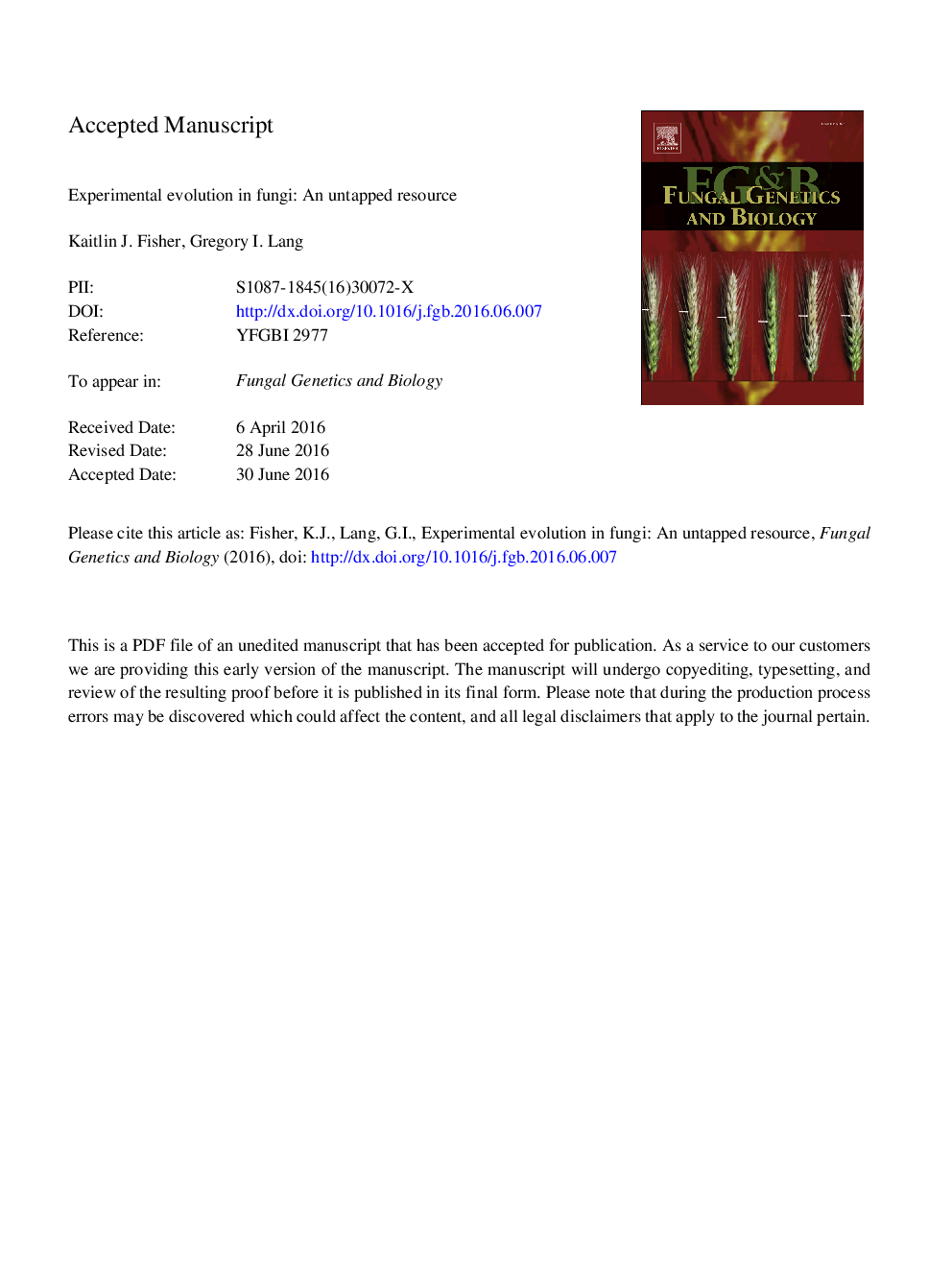| Article ID | Journal | Published Year | Pages | File Type |
|---|---|---|---|---|
| 8470481 | Fungal Genetics and Biology | 2016 | 19 Pages |
Abstract
Historically, evolutionary biology has been considered an observational science. Examining populations and inferring evolutionary histories mold evolutionary theories. In contrast, laboratory evolution experiments make use of the amenability of traditional model organisms to study fundamental processes underlying evolution in real time in simple, but well-controlled, environments. With advances in high-throughput biology and next generation sequencing, it is now possible to propagate hundreds of parallel populations over thousands of generations and to quantify precisely the frequencies of various mutations over time. Experimental evolution combines the ability to simultaneously monitor replicate populations with the power to vary individual parameters to test specific evolutionary hypotheses, something that is impractical or infeasible in natural populations. Many labs are now conducting laboratory evolution experiments in nearly all model systems including viruses, bacteria, yeast, nematodes, and fruit flies. Among these systems, fungi occupy a unique niche: with a short generation time, small compact genomes, and sexual cycles, fungi are a particularly valuable and largely untapped resource for propelling future growth in the field of experimental evolution. Here, we describe the current state of fungal experimental evolution and why fungi are uniquely positioned to answer many of the outstanding questions in the field. We also review which fungal species are most well suited for experimental evolution.
Related Topics
Life Sciences
Biochemistry, Genetics and Molecular Biology
Cell Biology
Authors
Kaitlin J. Fisher, Gregory I. Lang,
